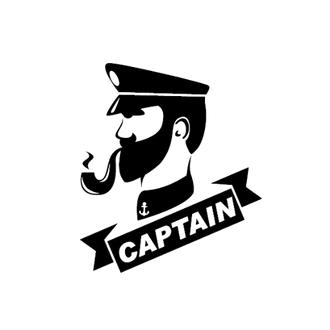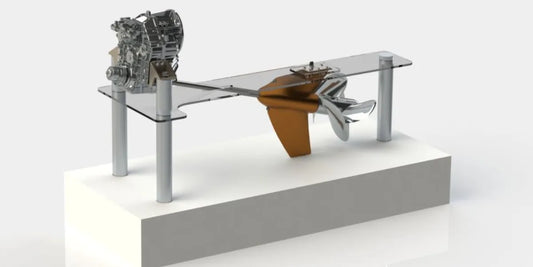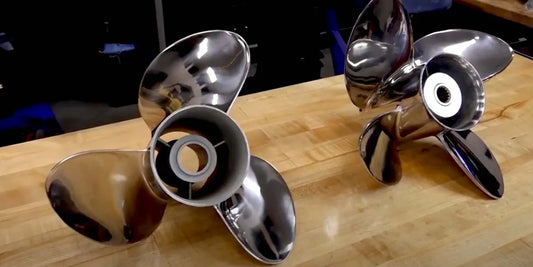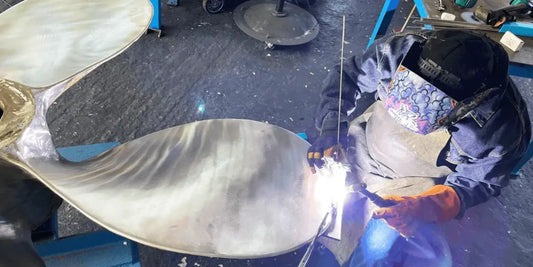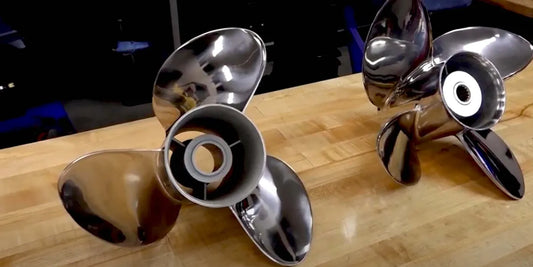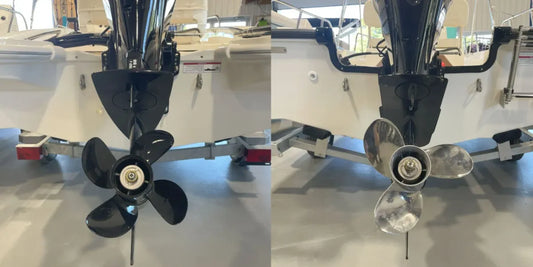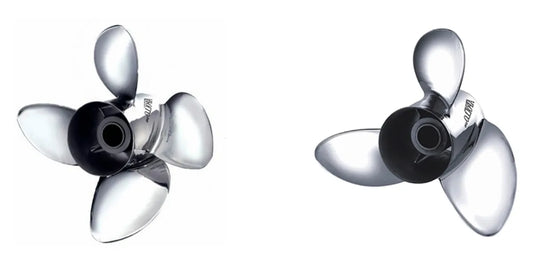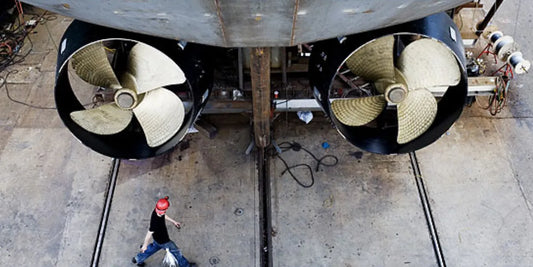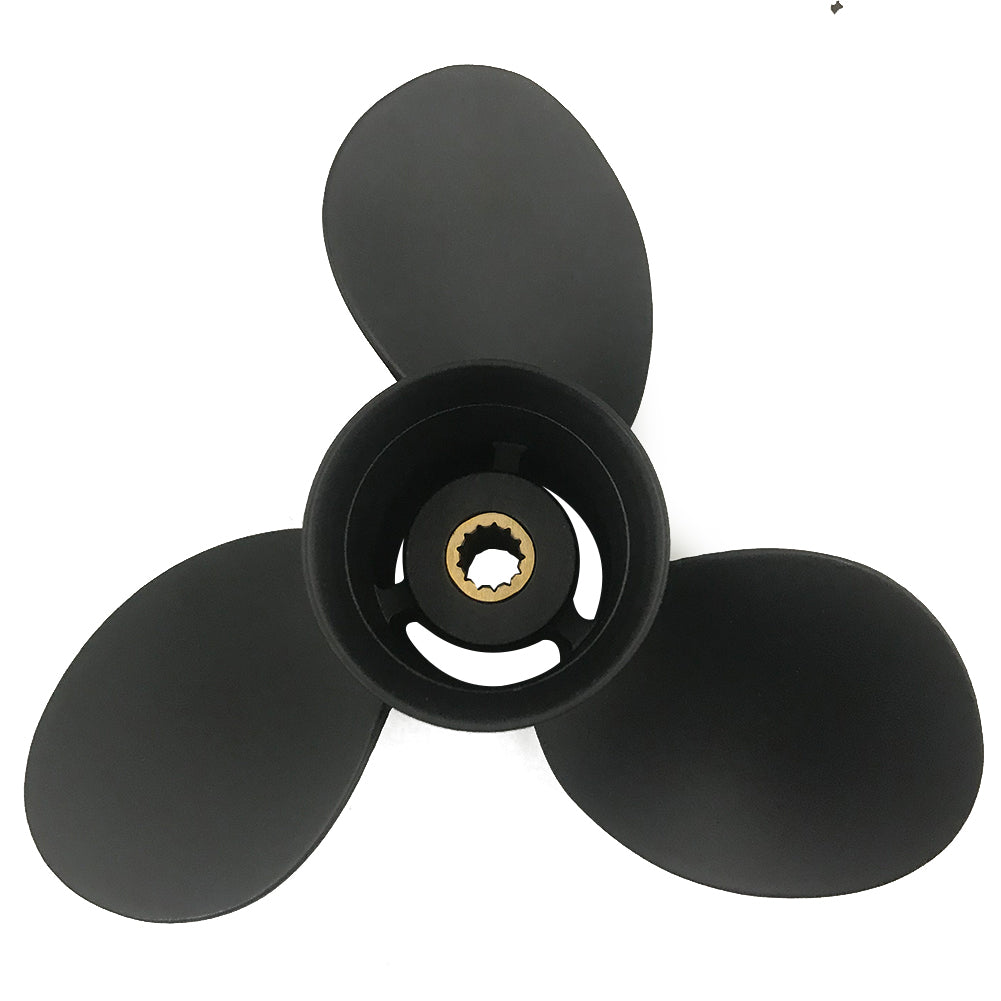Boaters know that a change in propeller can make a massive difference in performance, efficiency, and handling on the water. But there sits an age-old question: should one buy a 3-blade or a 4-blade propeller? How does one determine what is best for their needs? Each type offers distinct advantages that can impact various aspects, including speed, fuel economy, stability, and load-carrying capabilities. This article explores the key differences between 3- and 4-blade propellers, equipping you with the knowledge to make an informed decision aligned with your boating goals. Should you wish for the best performance or ground-breaking fuel efficiency, then weigh your options using this article as your guide and better your boating experience.
Introduction to Propeller Types

What is a Propeller?
Put simply, propellers constitute a mechanical device that provides thrust, consuming energy in the rotation of a motor; this thrust is then converted into mechanical energy by motor generators that drive the propeller at a different speed through water. It is generally constituted by a central hub from where several blades radially extend, and whose number could vary depending on the design and function of the propeller. The propeller rotates between two pressures: a lower pressure on the front blade surfaces and a higher pressure on the rear blade surfaces, accelerating a mass of water that is converted into forward or backward thrust. This action is vital for maneuvering, speed, and a vessel's overall performance.
Propellers are designed based on pitch, diameter, blade design, and material. Pitch refers to distances covered by a propeller in one full rotation through solid material; this affects speed and economics, while a diameter is the amount of water moved by the propeller, thus creating force. At the same time, the blade's shape and materials—such as aluminum, plastic, or stainless steel—may affect the lifespan and performance of the propeller under certain water conditions. From these different combinations, propellers are adjusted to satisfy various marine application requirements, from fast activities to towing and load-bearing needs.
The efficiency and applicability of a propeller depend on its partnership with the engine or with the vessel's operation itself. Hence, an enormous propeller with a smaller pitch would rather suit larger weights and slower speeds, while a diminutive propeller with high pitch will instead favor maximum speed and efficiency. Using this understanding in favor of the boater allows them to pick a propeller that guarantees better mileage, less wear and tear on the engine, and an all-around more enjoyable boating experience. Choosing the right propeller will help achieve the desired thrust and speed, balancing smoothness in handling on water.
Importance of Choosing the Right Blade
Choosing the blade design can significantly influence a boat's overall performance and efficiency at all times. The number of blades and their shape will affect thrust, top speed, and fuel efficiency. Generally, three-blade propellers are more suitable for boats that require higher top speeds, as they produce less drag and offer greater acceleration. Four-blade propellers provide a good compromise between stability and smoother operation in rough water, while also enhancing low-speed handling. Knowledge of these distinctions enables boaters to tailor their propellers to individual needs, whether for recreational cruising, water sports, or commercial use.
Furthermore, the materials used for the blade will influence its durability and efficiency. Stainless steel is the strongest and most wear-resistant material, boasting both strength and resistance to wear, making it highly suitable for high-performance uses or rough environments with numerous impacts. Aluminum ones are light and cheap; hence, they better suit a more general-purpose propeller in calmer conditions. Those improved designs also entail cupping the blades or incorporating wedge-shaped designs, which further enhance water flow patterns and reduce cavitation. Hence, when evaluating blade number, shape, and materials, boaters can expect improved performance with reduced strain on the engine and a longer propeller lifespan.
Overview of 3-Blade and 4-Blade Propeller Designs
The imbalance of advantages and disadvantages conferred upon its users rests near the choice between 3-blade or 4-blade propellers. Three-blade propellers are considered the most efficient type, providing speed; hence, they are mainly used for recreational boating or vessels that require top-end performance. Fewer blades mean less drag, resulting in faster speeds and improved fuel efficiency. However, 3-blade propellers also prefer light load conditions, where they offer power in balance with agility.
On the contrary, 4-blade propellers provide smoother control and shifts, especially in rough scenarios. The increased surface area of the extra blade provides a better grip in the water, improved thrust, and reduced slippage. These qualities make 4-blade propellers a better choice for boats that frequently navigate rough waters, tow loads, or engage in activities such as water skiing. Despite the slight loss in top speed over the 3-blade variety, their superlative low-speed handling, vibration reduction, and stability make up for it.
Data gleaned from recent developments tend to favor four blades that yield benefits under heavy loads, including improved fuel efficiency and better dispersal of engine power. Meanwhile, developments on both designs, including blade-thickness variations and specialized coating, prioritize optimizing durability and performance so boaters can select one that best suits their operational needs without compromising the health of their engine. Understanding these subtle differences enables boatmen to fine-tune their vessels' functionality based on specific versus generalized utilitarian layers for a better and more enjoyable fuel-efficiency experience."
Comparative Analysis: 3-Blade vs 4-Blade Propellers

Performance Characteristics of 3-Blade Propellers
Known within the performance world for its speed and efficiency, the three-blade propeller is seen by recreational boaters as a lighter-weight option to choose from. Regarding design, a 3-blade propeller causes less drag, allowing boats to achieve maximum speed with less engine strain. The setup is probably ideal for those prioritizing speed, such as those running lighter ships or engaging in water sports.
Conversely, 3-blade propellers tend to give quicker acceleration and increased fuel efficiency over 4-blade propellers in many cases. They respond very well in pure water conditions, where lift and reduced friction act in concert to power performance. Sometimes it cannot deliver peak thrust or hold a boat steady against a heavy load, whether it is rough or at slower speeds.
Advanced materials have paid tribute to the Renaissance in blade shaping, which contributes further to the continued evolution of the three-blade propeller. Materials of preparation are taken from a high-grade alloy with well-shaped hydrodynamic blades, providing high performance while being highly resistant to wear and tear. Whether for outright speed, fuel economy, or improved handling, the 3-blade propeller will excel where agility and efficiency are paramount.
Advantages of 4-Blade Propellers
The four-blade propeller is famously known for providing the perfect balance of thrust, stability, and efficiency. They meet the exact requirements of a wide variety of marine and aviation uses. The best aspect, however, is that the thrust power it provides is substantial, particularly at lower speeds, making it a crucial factor for vessels in need of improved maneuverability in adverse conditions, such as rough waters. Added blade surface provides smoother handling and control, especially when making sharp turns or sudden speed changes.
Additionally, they also worked to reduce cavitation and noise levels. By sharing the workload among an additional blade, 4-blade propellers generate less turbulence; thus, the increase in noise levels is avoided, while also prolonging the life expectancy of the equipment. They also work better for fuel efficiency as they provide an evenly distributed load across the propellers with less strain on the engines. This feature is mostly an advantage of the long-distance trip.
Modern Engineering Innovations, employing lightweight materials and advanced blade geometry, have given a significant boost to the development of 4 blade propellers. It is all about better management of airflow or water resistance, hence higher performance under harsh conditions. Regardless of whether it's about smooth acceleration, stability at high speeds, or excellent fuel economy, four-blade propellers will always be there for those who value precision and reliability.
Key Differences in Efficiency and Speed
When thrust is considered, the 4-blade propeller provides advantages for low-speed level activities, such as those that require towing or simply cruising in rough water. It also prevents cavitation and enhances handling, particularly under such conditions.
3-blade propeller applications may, however, be more suited to those focused on speed, where little drag would translate into a high-end rate. However, these days, improvements in 4-blade technology have narrowed the gap fairly substantially. Enhancements have been made to the blade shape and material weight, allowing them to compete in speed with more traditional designs while maintaining their efficiency.
Real-life testing has demonstrated that 4-blade propellers are the most effective in maintaining performance consistency across various loads and conditions. For example, it can perform better in terms of fuel economy and smoother acceleration, especially when powering heavier vessels or equipment. Such efficiency and adaptability also make 4-blade propellers highly valued, striking a balance between capacity, stability, and speed, without compromising work versatility.
Factors Influencing Your Choice

Boat Kind and Usage
The type of boat you own and how you intend to use it will, most importantly, decide the kind of propeller design that is best suited for it. In recreational boats designed primarily for family outings or water sports, four-blade propellers impart better handling and enhanced stability, allowing passengers to enjoy a smooth ride even in choppy waters. Conversely, fishing boats or vessels that operate in harsh environments benefit immensely from these propellers, as they provide a range of thrust, improved speed control, and maneuverability of paramount importance in tight and rugged waterways.
In cases where performance applications are a concern, such as for fast racing or lightweight vessels, the choice is usually towards configurations that favor maximum velocity. However, one cannot discount the alternatives that 4-blade propellers offer, which provide consistent performance with excellent fuel economy. Data also indicates that blade materials and modern design technologies enable them to evolve into a more durable and efficient option, accommodating almost any boating scenario.
Engine Power and Performance Needs
Engine power and its performance needs are substantially crucial in choosing the correct propeller for the application. Depending on the type of boating activity, emphasis will be on speed, efficiency, or control. For instance, high-performance engines coupled with properly designed 4-blade propellers can generate maximum thrust and high grip in the water, particularly with heavier loads or where stability is the prime consideration.
Due to recent developments in engine technology, which optimize fuel efficiency and enhance torque delivery, compatibility with propellers is becoming increasingly essential. Furthermore, innovations in data-driven marine performance analysis reveal that proper matching of pitch and diameter to engine specifications can significantly improve acceleration and handling. In modern propulsion systems, variable pitch adjustments can be employed for further enhancement of performance, tailored to particular operational requirements, such as recreational boating, racing, or commercial applications.
Water Conditions and Navigation Style
Understanding water conditions and aligning the navigation style is crucial concerning performance and safety. Typically, calm, glassy water allows for higher speeds with minimal drag, thereby accommodating the recreational or competitive spirit. In the higher formation of choppy or rough waters, performance must be adjusted accordingly, including trimming the engine or altering velocity, in the interest of stability and to minimize the impact on the hull.
The style of navigation is also a key determinant of performance. Shallow waters demand more attention to the selection of propellers with smaller diameters or greater pitches to avoid possible groundings, whereas deep waters will allow a certain latitude for arrangements. Moreover, tasks such as trolling or tight maneuvering often require low-speed precision, which can be achieved through gear ratio optimization or adjusted engine responsiveness for stricter control. By matching the propulsion systems and strategies to varying environments, boaters can ensure the utmost in efficiency and general navigation reliability, regardless of the water conditions.
Cost Considerations and Maintenance

Cost Differences Between 3-Blade vs 4-Blade Propellers
In the course of appropriately describing 3-blade and 4-blade propellers in terms of price differences, I've found an interesting anomaly: sometimes prices differ depending on the materials, brands, and design features. As a rule of thumb, 4-blade propellers are generally a little more expensive than 3-blade ones. The main reason behind this is that the extra blade requires more materials and labor to manufacture. The use of better materials, such as stainless steel or an exotic alloy, for either option magnifies the cost, but by comparison, the price difference is even greater.
I find that spending money on 4-blade propellers is usually related to weighing the cost against performance improvements. The extra blade provides one member of tremors and enhanced low-speed handling, thereby offering smoother operation and improved thrust under heavy loads in challenging water conditions. To a boater who demands such performance, the extra cost seems quite reasonable. The unfortunate thing for many users is that 3-blade types are far cheaper and only peak at speed and fuel efficiency, so the best choice already rests on cost.
This really depends on what you want from yours and how much you're willing to spend. The actual difference in price may initially deter someone, but it's worth it for the longer-term benefits that come with the right propeller for their specific needs. Whether you count dexterity, speed, or cheapness among your highest values, the understanding of what each option has to offer will help you best choose an option that suits your needs.
Tips on Propeller Maintenance for Both Categories of Propellers
According to my experience, maintaining both aluminum and stainless steel propellers is highly recommended to ensure the performance and longevity of the propellers. Regular inspections for aluminum propellers and checks for damage should be conducted, as they tend to develop dings, cracks, and bends more easily due to the material's softness with use. It is advisable to periodically disengage the propeller to free any fishing lines that may have become wrapped around the hub or debris that might have landed there. This ignoring could hurt the seal over time. Another good tip is to spray anti-corrosion agents on aluminum surfaces to reduce the chances of oxidation, especially if the time spent in saltwater is more than average.
As far as stainless steel propellers are concerned, they're far more durable, but I wouldn't recommend either disregarding any maintenance or going for little to no care. I tend to make a point of checking for nicks and scratches after each use, particularly in the case of minor propeller damage, as they can start affecting performance over time. Washing with mild soap and water is also beneficial, and then spraying the corrosion inhibitor is key to keeping it uncursed, especially in saltwater environments. With aluminum or stainless steel propellers, ensure that your prop nut is always tight and that you apply marine grease to the shaft regularly. It's worth doing the maintenance: it improves your boat's performance and extends the life of that prop, saving you from unnecessary costs down the road.
Life Cycle and Replacement Considerations
In my view, ensuring the longevity of your propeller ultimately comes down to proper maintenance, combined with a healthy dose of forethought regarding potential issues. One should always be on the lookout for visible signs of wear, such as cracks, dents, or warping, particularly after negotiating bodies of water with floating debris or a bottom littered with sharp rocks or stones. Once damaged, performance and fuel efficiency will be at the owner's detriment, so waiting is never an option. Another method I find helpful is to thoroughly clean my propellers when I return to the dock, especially if I've been in saltwater. Removing corrosive agents and applying a protective coating is a good way to prevent rust through corrosion and extend propeller life.
I've come to realize that, when it's time to replace a prop, anything coming down to that point is far more critical. I characterize situations where the vibrations remain present, or the speed has diminished, or, worse, fuel consumption is noticeably increased. These are situations that may indicate the inexcusably inefficient operation of the prop and, thus, the immediate need for replacement. I'm also considering the material from which the prop is made, because aluminum props typically won't last as long before replacement as stainless steel. Maintaining these habits, along with regular performance assessments, maximizes the lifetime of my props while ensuring the smooth and efficient operation of my boat.
Conclusion: Which Prop is Better for You?

Summary of Important Points
Several important factors should be considered when choosing a propeller for your boat. The points on which you should judge the selection of a propeller are: performance, durability, and the given characteristics of your boating needs. Aluminum propellers are lightweight, inexpensive, and suitable for leisure boating, but tend to wear down more quickly than their stainless steel counterparts. Stainless steel propellers are the opposite: they are costly, but they offer a high degree of durability, enhanced performance under stress, and resistance to environmental conditions such as corrosion. Balancing what each material has to offer will ensure that you have chosen a propeller suited to your performance expectations.
The condition of the propeller is also paramount for smooth boat running. If you notice anything out of place, such as fuel waste, vibrations on the boat, or visible signs of wear and tear, do not ignore it, as it may require repair or replacement. Thorough cleaning and inspection of the propellers will help prolong their life and boost performance. Keeping tabs on these factors and following an apt replacement procedure when the time comes would go a long way in ensuring a much smoother experience on the water and keeping your gear safe.
A good propeller selection depends on a good understanding of personal boating habits, as well as the particularities of the boat. Several factors influence the choice of the best propeller for you, including engine compatibility, usage, and water conditions. Utilize this knowledge to your utmost advantage, reaping excellent efficiency and reliability for your boat and ensuring a high-performing vessel for years to come.
Final Recommendations for Boat Owners
To maintain the highest level of performance and longevity of the vessel, every decision in boating must be made carefully and with the latest knowledge. Constant maintenance should be your goal, ensuring that the engine, propeller, and hull are in good working condition at all times. Thorough inspections can provide early detection of areas that are undergoing wear and tear, potentially leading to avoidable, costly repairs.
Consider the technological advances that have been applied to boost the experience. For example, through modern technology, new propellers have been developed that carry superior durability compared to stainless steel. Additionally, GPS navigation and digital engine management systems will significantly enhance the boat's efficiency, fuel economy, and safety.
Management of fuel is a very important factor. Data indicate that utilizing fresh and clean fuel, along with standard treatment as specified for fuel systems, can result in a significant improvement in engine performance. For boaters who work in salt water, anti-corrosion treatments and proper flushing systems are their utmost need.
Lastly, keep yourself engaged with community forums, workshops, and expert seminars to stay updated on aging trends, new technologies, and safety issues. By blending thoughtful upgrades and routine maintenance with informed decisions, you can enjoy your boat for a long time without any problems.
Encouragement to Test and Evaluate Personal Needs
Testing and evaluating needs is a fundamental step for anyone trying to find the way to improve their boating experiences and maintain the best performance from the vessel in question. Every boater has different needs, depending on their use frequency, environment, and vessel. Within these changes will be the most critical factors in deciding whether to test your boat's performance in different conditions, such as changes in weather, changes in load, and prolonged use. When thoroughly examined, these areas will provide insight into where minor improvements, upgrades, or care needs can genuinely make a difference.
Utilize the latest instruments and procedures in your evaluations. Modern technologies and resources can not only enhance performance but also impact the cost factor. For instance, smart sensors could be deployed to track mechanical wear or fuel efficiency in real-time and offer the ability to adjust your habits for better output results. Additionally, consider recommendation-based data, such as trends related to green engine upgrades or revitalized hull designs, to enhance both your boating setup against real-world standards and your personal preferences.
Linking this knowledge with an action-oriented attitude ensures that your investments work not only to meet current needs but also to achieve long-term reliability and enjoyment. Testing and refining strategies regularly will keep you up-to-date with emerging innovations as you develop a custom approach to maximizing currency, safety, and enjoyment on the water. Take this opportunity to evaluate and refine your procedures to strike a balance between personal satisfaction and cutting-edge implementations.
Reference Sources
-
3-Blade vs. 4-Blade Propeller
This source explains the differences in power, vibration absorption, and suitability for various boats. -
3-Blade vs. 4-Blade Prop: What Are The Differences?
Highlights the advantages of 3-blade propellers, including reduced drag and improved fuel efficiency. -
4-Blade vs 3-Blade Propeller
Discusses the performance differences, including low-speed pulling power and drag. -
Which Prop is Better For Your Boat: 4 Blades or 3 Blades?
A detailed comparison of efficiency and performance between the two propeller types. -
3-Blade vs 4-Blade Opinions
Provides insights into lift, propeller tube length, and other factors influencing performance.
Frequently Asked Questions (FAQs)
What are a few essential differences between a 3-blade and a 4-blade propeller?
With one blade, the main difference lies in the performance characteristics between the two. A 3-blade propeller tends to achieve the highest top-end speed due to lower drag, making it optimized for situations where one wants to go the fastest. Whereas a 4-blade allows for a better hole shot and at low speeds, it favors, for example, water skiing. The additional blade surface area generates more thrust with a 4-blade, especially when the boat is accelerating from a standstill. So it is dependent upon hull design and what it will be used for.
How does fuel economy go with the number of blades?
The fuel economy changes depending on the number of blades on your propeller. A 3-blade propeller means having less area on the surface, offering a top high speed and fuel mileage at cruising speeds. However, at low speeds and when accelerating, a 4-blade may be more fuel-efficient since it maintains a higher RPM for a given throttle setting. In practical terms, that means that for most boats operating more at low speeds, a 4-blade propeller can improve fuel economy despite its initial higher drag. Knowing how your boat is used will help you select a prop that best suits your fuel economy.
Is a 4-blade better for hole shot performance?
Yes, a 4-blade propeller is generally considered better at hole shot performance compared to a 3-blade propeller. Hence, the additional blade generates more thrust at low speeds, allowing the boat to plane faster. This is very helpful for water skiing or when carrying heavy loads. While a 3-blade prop gets to high top-end speed at WOT, it struggles with acceleration from the start. Therefore, if quick acceleration is a factor in the activities involved (like on a ski boat), the 4-blade will make the boat perform better overall.
What are the upside and downside for RPMs of 3-blade and 4-blade propellers?
According to the observation, the RPM at which the boat runs is quite different when comparing 3 3-blade prop and 4 4-blade prop. A 3-blade propeller tends to run at higher RPMs, which is suitable for achieving higher top-end speeds. A 4-blade, on the other hand, runs at lower RPM but offers greater thrust and acceleration, which are often preferred in certain activities. Another factor is the design and pitch of the propellers. You need maximum efficiency and top performance to match your props to your motor.
Will changing my 3-blade prop to a 4-blade prop affect top-end speed?
Conversion from a 3-blade to a 4-blade prop does affect the top-end speed of the boat. Yes, a 3-blade prop generally kills its top speed because of the lesser amount of drag; a 4-blade gets going faster and performs better at lower speeds, though. So, while you are losing some top-end speed, overall, you may experience better hole shots and stability at low speeds. If quick acceleration is significant in the activities you engage in, then this trade-off on top speed will be well worth it. Analyzing your needs will help you determine whether the conversion is a good move.
What factors should I consider when choosing a 3-blade or 4-blade prop?
In choosing between a 3-blade and 4-blade prop, certain things should be considered. One is the use of your boat. Water skiing, for instance, would need a better hole shot, which a 4-blade prop can provide. Next, the desired top speed and cruising RPM should be considered, as a 3-blade prop usually possesses greater potential in this regard. Then came the design of the boat's hull. Some designs will perform better with one type of propeller than another. Lastly, consider your engine specifications and performance goals. The more the propeller matches the engine, the more efficient and fast they both will become.
